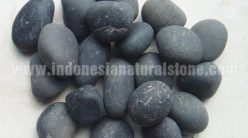ncbi.nlm.nih.gov
Ou K,
Seow TK,
Liang RC,
Lee BW,
Goh DL,
Chua KY,
Chung MC.
Bioprocessing Technology Center, Singapore National University of Singapore. btcoukl@nus.edu.sg
For centuries, the edible nests of Collocalia spp. (“Bird’s Nests”) have been used as a Chinese delicacy that had been claimed to be an effective health-giving tonic. However, clinical studies indicated that in Singapore, Bird’s Nest is the most common cause of food-induced anaphylaxis in children, which could lead to potentially life-threatening allergenic reactions. The purpose of this study was to characterize the major allergens in Bird’s Nest by using the combined technologies of two-dimensional gel electrophoresis (2-DE), immunochemistry, N-terminal protein sequencing, and mass spectrometry. Results from the immunostaining of the Western blots of the Bird’s Nest 2-DE separated proteins with the sera from allergic patients indicated the presence of a major allergen of 66 kDa. Initial searches of the matrix assisted laser desorption/ionization–time of flight–mass spectrometry (MALDI-TOF-MS) tryptic peptide masses of the allergen in the SWISS-PROT and NCBI nonredundant databases revealed that this protein was novel. Based on the partial protein sequence information obtained from N-terminal microsequencing and nanoelectrospray-tandem MS, the 66 kDa immunoreactive allergen was found to be homologous to ovoinhibitor, a Kazal-type serine protease inhibitor, which is one of the dominant allergens found in chicken egg white.
PMID: 11669547 [PubMed – indexed for MEDLINE]





